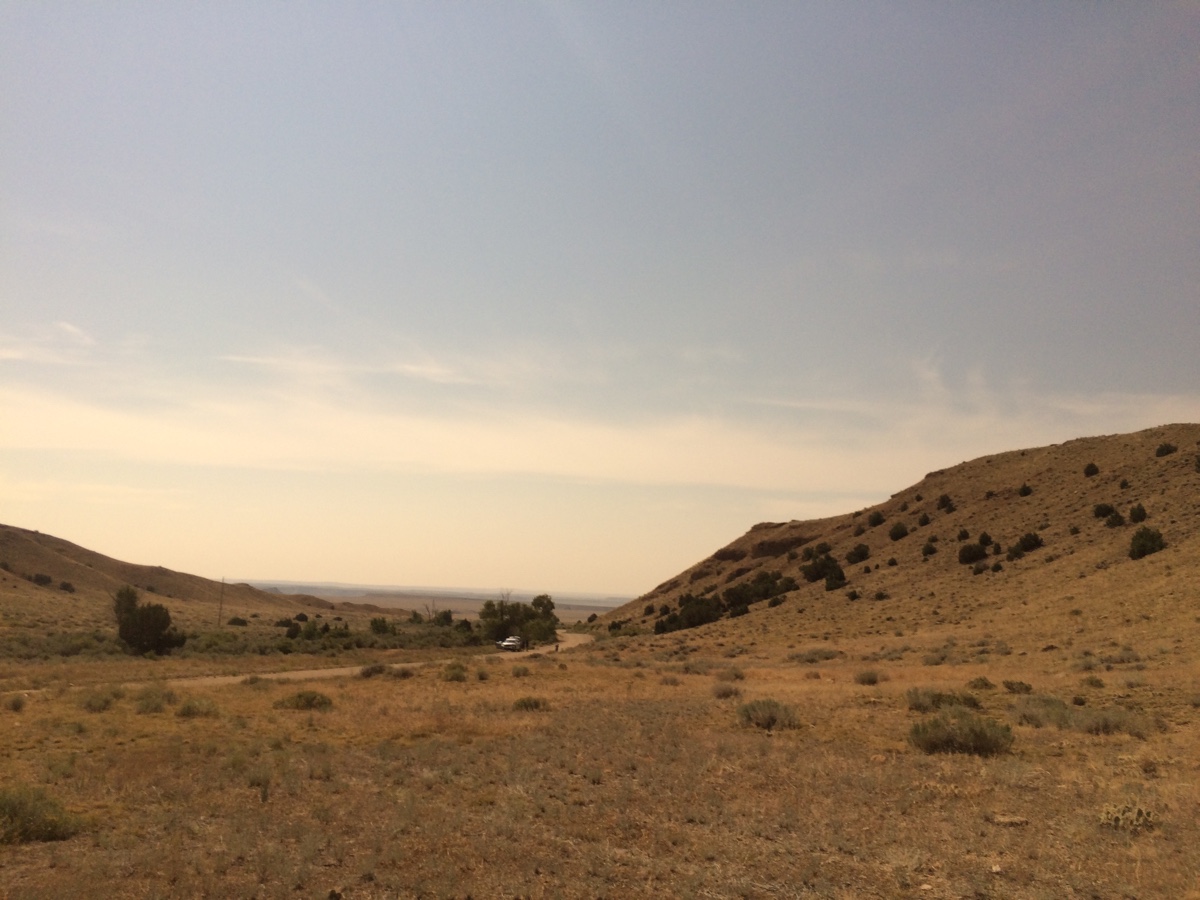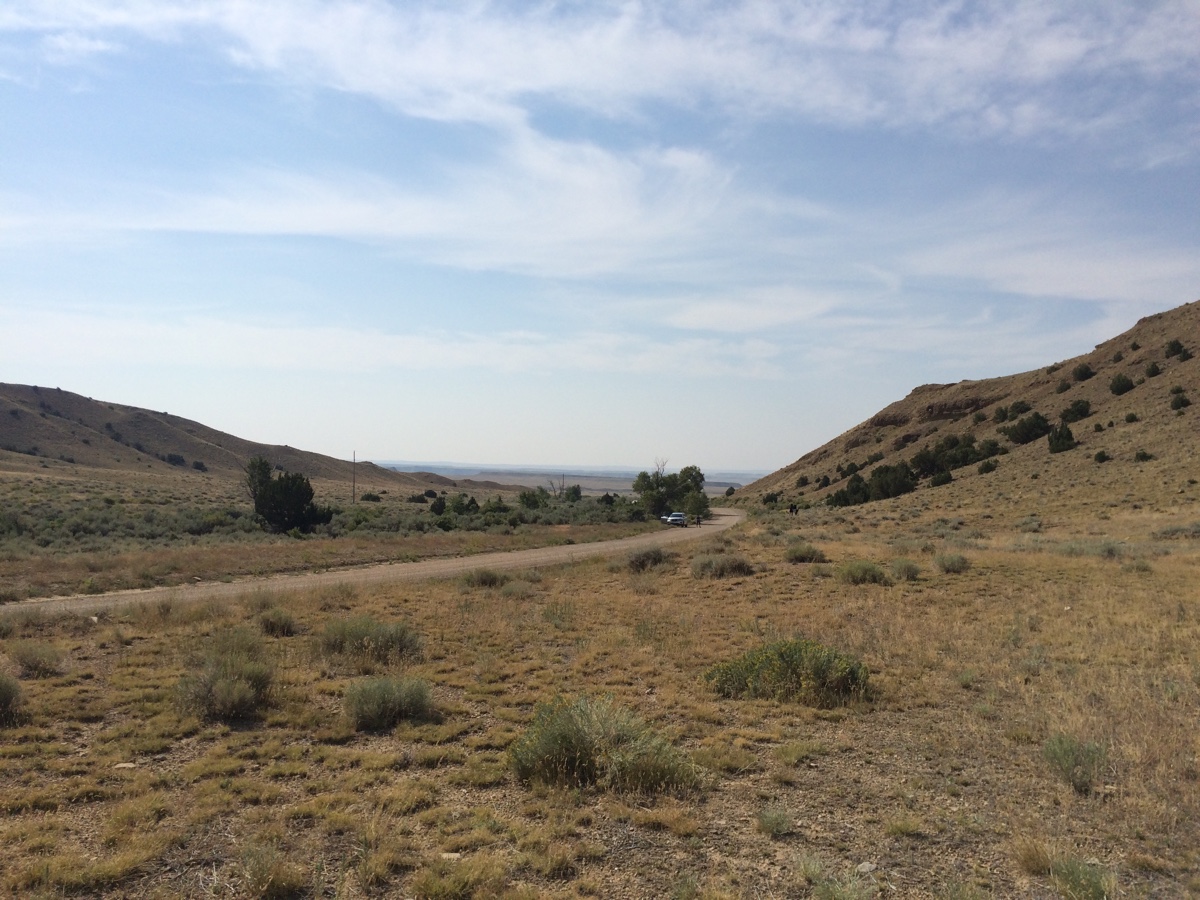Great American Eclipse Casts Shadow Over Great American Desert

THERMOPOLIS, Wyo. – The Great American Desert becomes a more pleasant place during a Great American Solar Eclipse.
On sunbaked, scrubby public land, instant twilight brings cool relief, and a rosy 360-degree sunset. Above it all, the blotted sun reigns. People across a swath of the United States viewed totality today (Aug. 21), from craggy Pacific Northwest beaches, from Midwestern farm roads, from cities like Nashville and from boats off the South Carolina coast. The path of totality tied together a quilt of American landscapes. Here in Wyoming, the desolation of the desert met the drama of the sky and left no doubt as to why ancient cultures spun complex mythologies out of the sun's disappearance.
Totality bathed the Bureau of Land Management holdings south of Thermopolis at about 11:40 a.m. local time and lasted just over 2 minutes. Campers and SUVs lined Birdseye Pass Road, a dirt road that heads east into the hills from Highway 20. Cow patties and deer pellets dot the sagebrush desert, but it's hard to imagine what sustenance they glean from this land. Every plant is spiny or prickly, or embeds your socks with vicious burrs. [Christopher Columbus to Thailand's Kings: 11 Curious Stories About Eclipses]
As the moon ate away at the sun's face, shadows went blurry and the light became odd. It was a nearly cloudless day, and there was no temptation to look directly at the sun even as it became a crescent sliver; in the high, dry air, its light remained strong until it was more than 95 percent obscured. The dimming light was, one of my viewing companions said, the same kind of darkening that might infiltrate your vision before you fall unconscious. When the sun vanished, twilight stretched around us. A few planets and stars peeked over the low mountains. We had driven far enough back into the ravine to escape the crowded-for-Wyoming stretch near the highway. Behind us on a rise, we heard a few exhilarated whoops. The only other sounds were our own exclamations over the strangeness of the light and the bizarre sight of the sun turning into a hole in the sky.

The corona stretched around that hole like a white mist. Two minutes seemed to pass in a few seconds, and a diamond pinpoint of light re-emerged. Illumination returned as if someone had turned on a huge set of stadium lights. Our bleary shadows reappeared. [Gorgeous Images of the Sun's Corona]
The sun's temporary disappearance remained apparent in the mild temperature for another hour. We hunted shiny rocks and glanced up with our eclipse shades as the moon's shadow receded from the surface of the sun. RVs and pickup trucks kicked up dust as they returned to the highway. Going north, traffic flowed slowly but smoothly through the Wind River Canyon as eclipse chasers returned to Thermopolis, to Cody, to Billings. The towns in this part of Wyoming called this event the Wind River Eclipse; some of the best views were from the Wind River Reservation nearby. Campgrounds and hotels from Lander to Riverton to Thermopolis were full. Local businesses handled the influx with a sort of amused aplomb. Tourists pass through here each summer on the way to Yellowstone National Park, or to soak in geothermal hot springs or view a world-class fossil of an Archaeopteryx at the Wyoming Dinosaur Center in Thermopolis. But this kind of rush is unprecedented. The Wyoming Department of Transportation estimated that 217,000 extra vehicles traveled on the state's roads in the last five days, but full-blown traffic jams have been limited. The hard work of Wyomans in prepping for this solar moment paid off.
Most visitors in this part of Wyoming seemed to hail from Colorado, Montana or other Western states. On this land where Native Americans left petroglyphs dating back 10,000 years, pioneers left wagon ruts and early settlers left dried-out, abandoned ranches, the Great American Solar Eclipse brought modern Westerners together under one blazing, blacked-out sun.
Sign up for the Live Science daily newsletter now
Get the world’s most fascinating discoveries delivered straight to your inbox.
The next time the continental United States will see a total solar eclipse is April 8, 2024, when the path of totality will travel on a diagonal from Texas to Arkansas to Maine. My advice? Be there.
Original article on Live Science.

Stephanie Pappas is a contributing writer for Live Science, covering topics ranging from geoscience to archaeology to the human brain and behavior. She was previously a senior writer for Live Science but is now a freelancer based in Denver, Colorado, and regularly contributes to Scientific American and The Monitor, the monthly magazine of the American Psychological Association. Stephanie received a bachelor's degree in psychology from the University of South Carolina and a graduate certificate in science communication from the University of California, Santa Cruz.









